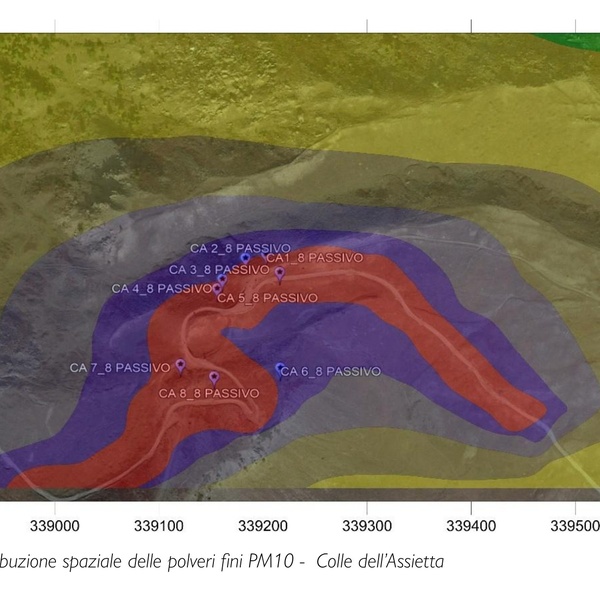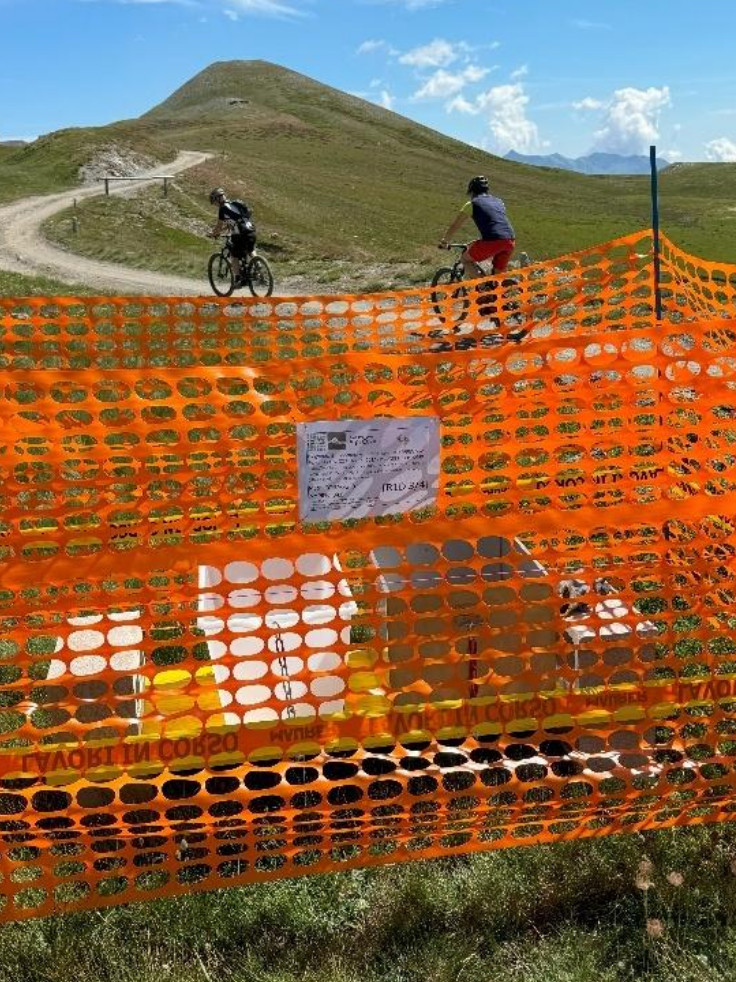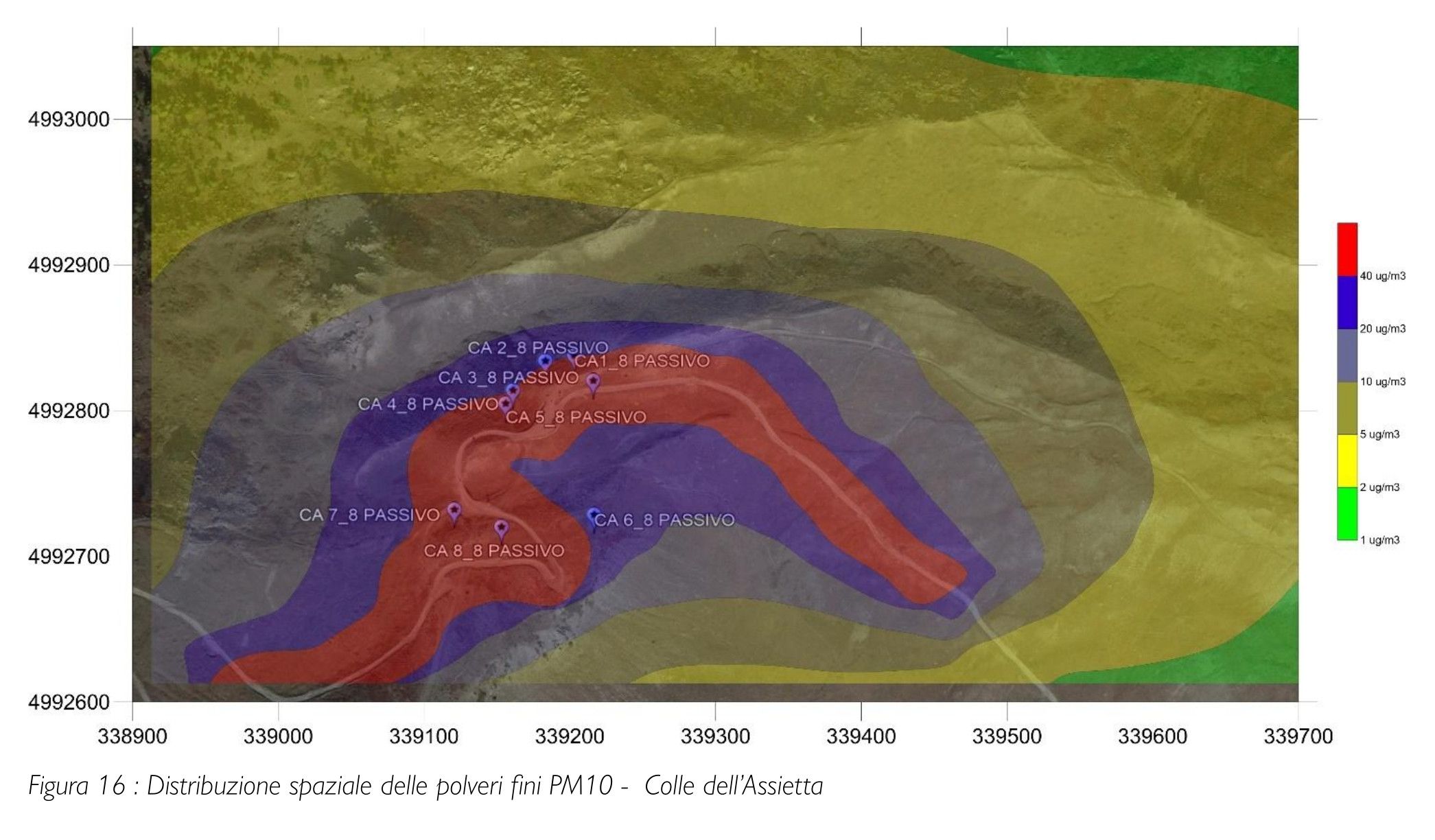The impacts of vehicle traffic on the Assietta
July 31, 2025Even during the summer of 2025, monitoring activities are ongoing to measure the impacts of tourist traffic on mountain flora and fauna. Following an initial experimental phase conducted in 2024, the work continues within the Interreg BiodivTourAlps Project along the Provincial Road 173 of Assietta, where intense human presence concentrates in a fragile high-altitude environment during the summer.
Types of Impacts Measured
The choice of the most significant aspects to focus on during the monitoring was shared with the other park entities participating in the project to obtain comparable results from various problems identified in each protected area. In particular, along the Assietta road, it was decided to focus attention on the impact generated by vehicular traffic, which reaches considerable levels on certain days.
First, the counting of vehicles circulating on SP 173 proceeds with the installation of two detectors at Pian dell’Alpe and Col Basset, capable of counting vehicle passages and categorizing them into cars, motorcycles, and bicycles. Secondly, air quality is analyzed by measuring the concentration of dust raised by passing vehicles and the presence of pollutants from engine combustion and wear of mechanical components. Finally, regular monitoring of birdlife and marmots is conducted to assess the correlation between fauna presence and human traffic. A portion of the data was collected in the summer of 2024, while the most significant part of the work is ongoing in these months. A final portion of the study will take place during the winter months within the Natura 2000 sites of Val Thuras and Valle della Ripa to assess the impact of heli-skiing on the populations of black grouse and white partridge.
The Impact of Vehicular Traffic: Detection Techniques
The most notable aspect related to the impact of human activities on environments along the Assietta road is the presence of vehicular traffic at high altitudes (between 2100 and 2500 meters). During the summer of 2024, from July 25 to October 31, the detectors recorded the passage of 19,002 vehicles at Pian dell’Alpe and 18,019 at Col Basset, of which 38% were cars, 43% were motorcycles, and 19% were bicycles. This means an average of over 180 passages per day, with a peak of 640 on July 28.
"The type of effect we have tried to analyze," begins Gabriella Fasciani from Jera Consulting, to whom the Park Authority entrusted the monitoring, "involves the dust raised by vehicles along the 36 kilometers of unpaved road. The hypothesis is that, in addition to emissions generated by engines and particles from brake pad wear, tire wear, and body component wear, each vehicle disturbs the roadbed, which will then tend to settle on the surrounding lands and meadows, creating an obstacle to the photosynthesis process of leaves and slowing down plant growth. The objective is to measure the phenomenon considering the complexities offered by the type of environment in which we are working because the tools commonly used in cities require electric energy, which is not available in the Assietta area. We have therefore arranged a series of sediment traps along the road to collect sediments and passive detectors to measure the concentration of nitrogen oxides (NOx), in addition to a dedicated weather station to obtain localized information on temperature, precipitation, and wind, which are crucial in analyzing the data."
The Impact of Vehicular Traffic: 2024 Data
"The measurements taken in 2024," continues Fasciani, "unfortunately did not provide reliable results regarding dust due to the heavy precipitation characterizing the beginning of autumn, causing excessive dilution in the sediment traps. However, we did obtain a series of estimates based on an algorithm used on construction sites to calculate dust resuspension based on vehicle weight classes. This is a scientifically validated system that provides a relatively high result, especially for fine PM10 dust, considering the environment. However, the granulometric analysis of the sediments shows that they mainly consist of chemical substances associated with natural soil components that could, in turn, carry combustion residues, particularly polycyclic aromatic hydrocarbons (PAHs) adhered in particulate form. To draw conclusions, however, it will be necessary to wait for the results of ongoing sampling in the summer of 2025, in the hope that they provide more robust data compared to last year."
You might also be interested in...
- campaign A nudge to comply with the regulations
- campaign Strada Assietta: chiusura invernale
- campaign Monitorare gli ortotteri: una sperimentazione nei Parchi Alpi Cozie
- campaign Climate change is pushing birds higher.
- campaign Two days of discussion on water resource management
- campaign The territorial distribution of mustelids in a study
- tactic Alcotra BiodivTourAlps
- tactic The Protected Areas of the Cozie Alps project on iNaturalist
- tactic MonITRing
- tactic Monitoraggio della Biodiversità Animale in Ambiente Alpino
 Research
Research



